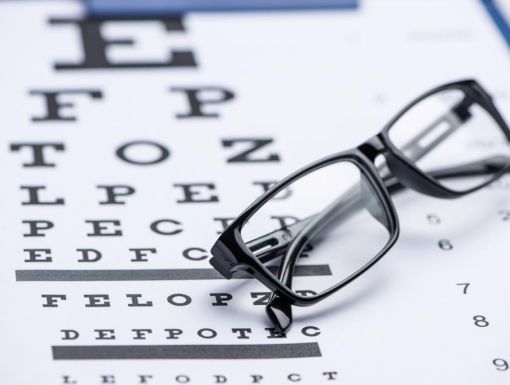
Maximize Your 2025 Healthcare Benefits Before They Expire
Your health insurance plan includes valuable benefits that can help you stay healthy and save on out-of-pocket expenses. But here's something many people don't realize: Some of these benefits reset or expire on Jan. 1, which means any unused perks could disappear when the calendar flips to the new year.
The good news? You still have time to take full advantage of what your plan offers and make the most of what you’ve already paid for through your premiums. Whether it's scheduling that overdue checkup, using funds from your health savings account or meeting your deductible before it resets, a few strategic moves now can make a real difference in your healthcare management.
Why is it important to use my healthcare benefits before the year ends?
Most health insurance plans operate on a calendar-year basis, which means your deductibles, out-of-pocket maximums and flexible spending account balances reset on Jan. 1. This annual reset can significantly impact your healthcare costs and available benefits.
What preventive care services are covered by my insurance?
Under the Affordable Care Act, most health insurance plans cover annual checkups and preventive care visits at no out-of-pocket cost to you. This includes services like:
- Primary care visits: These appointments allow your doctor to assess your overall health, update your medical history and catch potential issues early when they're most treatable. If you haven't had your annual physical this year, scheduling one now ensures you maintain continuity of care.
- Women’s wellness exams, including mammograms and cervical cancer screenings: These screenings are important for early detection of serious health conditions. Mammograms can detect breast cancer up to two years before a lump can be felt, while regular Pap tests can identify cervical changes before they become cancerous.
- Preventive screenings beyond basic checkups: Colonoscopies for adults over 45, bone density tests for women over 65 and some cardiovascular screenings are all typically covered services. Your insurance plan details will specify exactly which preventive services are included and at what frequency.
These preventive visits are more than just a box to check off. Regular screenings and checkups allow your healthcare provider to monitor your health over time, identify risk factors and help you make informed decisions about your care. Early detection often leads to better health and can prevent more serious health problems down the road.
Check with your insurance provider to see what preventive services are covered under your plan. Once you know what's available, schedule your appointment here before the end of the year.
What expenses can I use my HSA or FSA for?
Health Savings Accounts (HSAs) and Flexible Spending Accounts (FSAs) serve different purposes and have distinct rules that affect your year-end planning. These accounts can be used for a wide range of healthcare-related expenses, including deductibles, copays and prescription medication. They also extend beyond doctor visits and prescriptions. Dental work, vision care, medical equipment and certain over-the-counter medications all qualify. Even items like first-aid supplies, thermometers and blood pressure monitors can be legitimate medical expenses when purchased with proper documentation.
Here's the catch: depending on your plan type, unused funds may not roll over into the next year.
If you are concerned that your funds won’t roll over, you could take inventory of your current healthcare needs. Do you need any prescriptions refilled? Or medical equipment or supplies that would improve your quality of life? Making strategic purchases now ensures your hard-earned money goes toward supporting your health rather than vanishing at the stroke of midnight on December 31.
What is the difference between an HSA and an FSA?
- FSAs often follow a "use it or lose it" rule, meaning any money left in your account at year's end could be forfeited. Most FSAs require you to use the funds by Dec. 31, though some employers offer a grace period until March 15 or allow you to carry over up to $640 to the following year. Check with your benefits administrator to understand your specific FSA rules.
- HSAs offer tax advantages and typically allow funds to roll over completely from year to year. Money you don't spend this year remains in your HSA account for future healthcare expenses. However, it's still smart to review your balance and consider any healthcare expenses you've been putting off.
What happens to my deductible and out-of-pocket maximum on Jan. 1?
Insurance deductibles reset on Jan. 1 in most cases. For those who have met their deductible, now is an optimal time to schedule nonemergency procedures, specialist consultations or diagnostic tests. Your out-of-pocket costs will likely be significantly lower now than they would be early next year when your deductible resets to zero.
Once you've met your deductible, your insurance typically covers a larger portion of your healthcare expenses, if not all. This means seeing a provider now, while your deductible is met, may save you money compared to waiting until January, when you'll start from zero again.
How can I check my current deductible status?
Check your current deductible progress by logging into your insurance company's online portal or calling the customer service number on your insurance card. Many people are surprised to discover they're closer to meeting their deductible than they realized, especially if they've had any significant medical expenses this year.
On the other hand, if you're close to meeting your deductible but haven't quite reached it, you might consider scheduling necessary care before year's end. This allows you to hit your deductible threshold and take advantage of better coverage for any additional services you need.
What should I do if I haven’t met my deductible yet?
If you haven't met your deductible yet, don't let that discourage you from seeking necessary care. Ochsner Health offers interest-free payment plans to help make healthcare more affordable. These plans allow you to spread the cost of your treatment over several months without additional financial burden. Call 855-315-8282 to learn more about your options.
How can I estimate my healthcare costs?
Understanding what you'll pay for a medical service before you receive it brings clarity and peace of mind.
Ochsner's online pricing estimate tool, available through MyOchsner, lets you create personalized cost estimates for over 300 healthcare services. This transparency helps you plan for upcoming appointments and make informed choices about your care.
Simply log in to MyOchsner to access the pricing tool and get a better understanding of what your next visit might cost based on your specific insurance coverage.
You can also see a list of insurances Ochsner Health accepts here.
How can I plan my healthcare expenses strategically?
Smart healthcare financial planning involves looking at both immediate needs and upcoming requirements. Create a healthcare budget that accounts for your known medical needs and builds in flexibility for unexpected expenses.
Start by reviewing any medical recommendations from your healthcare providers that you haven't yet addressed. Have you been putting off that specialist referral? Is there a recommended procedure you've been postponing? December might be the perfect time to act, especially if you've already met significant portions of your deductible.
An important factor is to consider your family's healthcare needs. Children may need updated immunizations, sports physicals or routine dental work. Adults should stay current with age-appropriate screenings and preventive care. Planning these expenses strategically can help you maximize your insurance benefits and minimize your out-of-pocket costs.
What questions should I ask my insurance provider?
Direct communication with your insurance company gives you accurate, up-to-date information about your specific coverage and benefits. Don't rely on general assumptions about what your plan covers.
Contact your insurance provider to confirm your current deductible status, remaining out-of-pocket maximum and any unused benefits that expire at year-end. Ask specifically about coverage levels for services you're considering. Some plans have different deductibles for medical services versus prescription drugs, or different coverage levels for in-network versus out-of-network providers.
Verify the specifics of your preventive care coverage. While most plans cover certain preventive services fully, the exact list can vary. Understanding what's covered helps you prioritize your healthcare appointments and avoid unexpected costs.
Ask about your prescription drug coverage as well. Some plans have separate deductibles for medications, and year-end might be a good time to fill prescriptions if you've already met your drug deductible.
Take charge of your healthcare today
Your healthcare benefits are a valuable resource, but only if you use them. By scheduling preventive care appointments, making the most of your health savings accounts and understanding your deductible status, you can end 2025 on a strong note and set yourself up for a healthier new year.
Schedule your appointments today online, through MyOchsner, or call 318-330-7168 to speak with someone who can help. Your health is worth the investment, and we're here to support you every step of the way.


